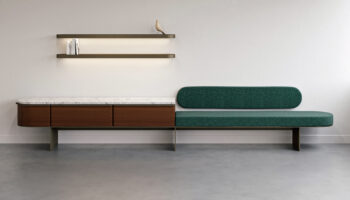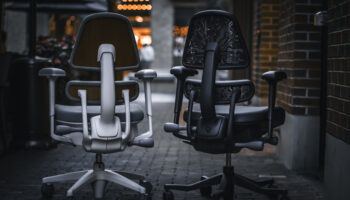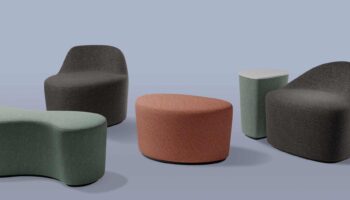Robert Stadler’s Dissipations
Vienna-born, Milan-educated, Paris-dwelling designer/artist Robert Stadler is quite familiar with the art/design distinction (or confluence, if you’re a “glass half full” kind of person). His pieces emerge as the tangibles of a stated objective to “obliterate all hierarchies between free proposals and industrial commissions… [to] explore the exhibition space in order to scramble the usual categories of art and design.”
Dissipations. Designed by Robert Stadler.
His oeuvre is full of examples that illustrate this fudging of the lines: “Pools and Pouf!” is at once an homage to modern design stalwarts like Friedrick Kiesler and an art piece that questions conventional notions of “modern” forms; likewise, “Rest in Peace” commodifies an artful conception of immateriality and decay, revealing a bit of the hypocrisy (and hilarity) of placing an inordinate value on something because much of it isn’t there.

This weekend’s Galerie Emmanuel Perrotin in Paris is another venue that has taken the bait. This time to showcase Stadler’s “Dissipations”-a collection of furniture pieces that walk the tightrope between art (or sculpture) and functional product. Comprised of stacks of flat, rectangular boards with rounded edges that he either upholsters or finishes with lacquer, the collection calls to mind the haphazard array-I see stacks of books or magazines in some disheveled hipster’s pad in Amsterdam, or unfathomably high piles of dirty dishes that might be the stuff of Bugs’ nightmares in one of the classic Warner Brothers cartoons. In this sense, Stadler’s Dissapations aligns itself with a history of found art (aficionados of Duchamp or Francis Picabia take note), as well as with an emerging trend of “found design” (see Schubladenstapel and Decades by Wis) Though Stadler’s “Possible Low Table,” “Possible Meridienne,” and “Possible Plateforms” aren’t “found” in the strict sense (neither were Duchamp’s, if you believe the muckrakers), they occupy the same niche and satisfy the same objective-to remind us that innovative design thrives on new perceptions, that even a mundane object, when re-contextualized and/or re-assembled, can help us glimpse the future.




Leave a Reply